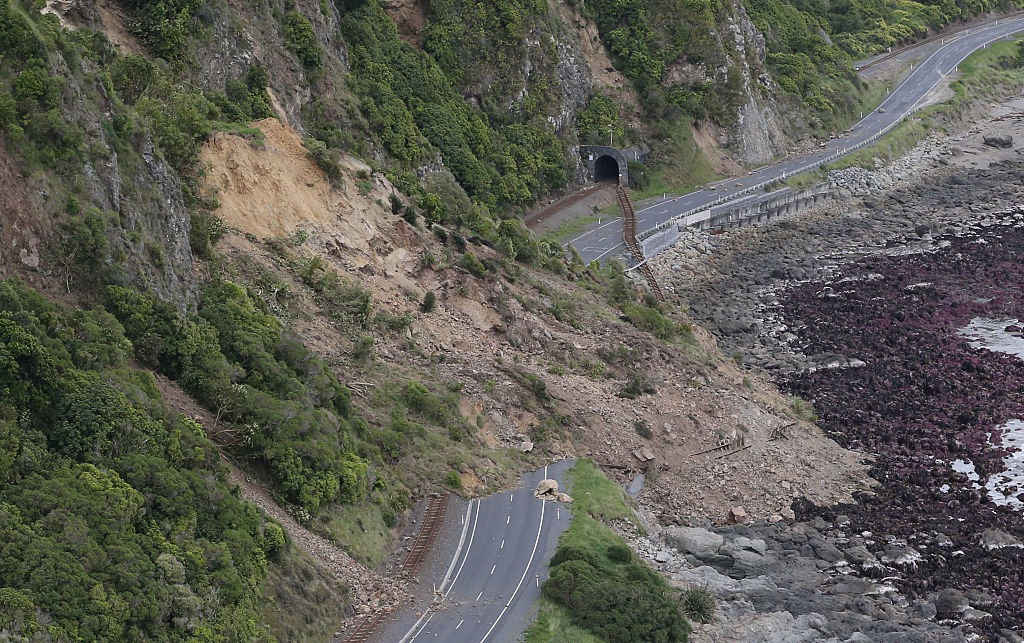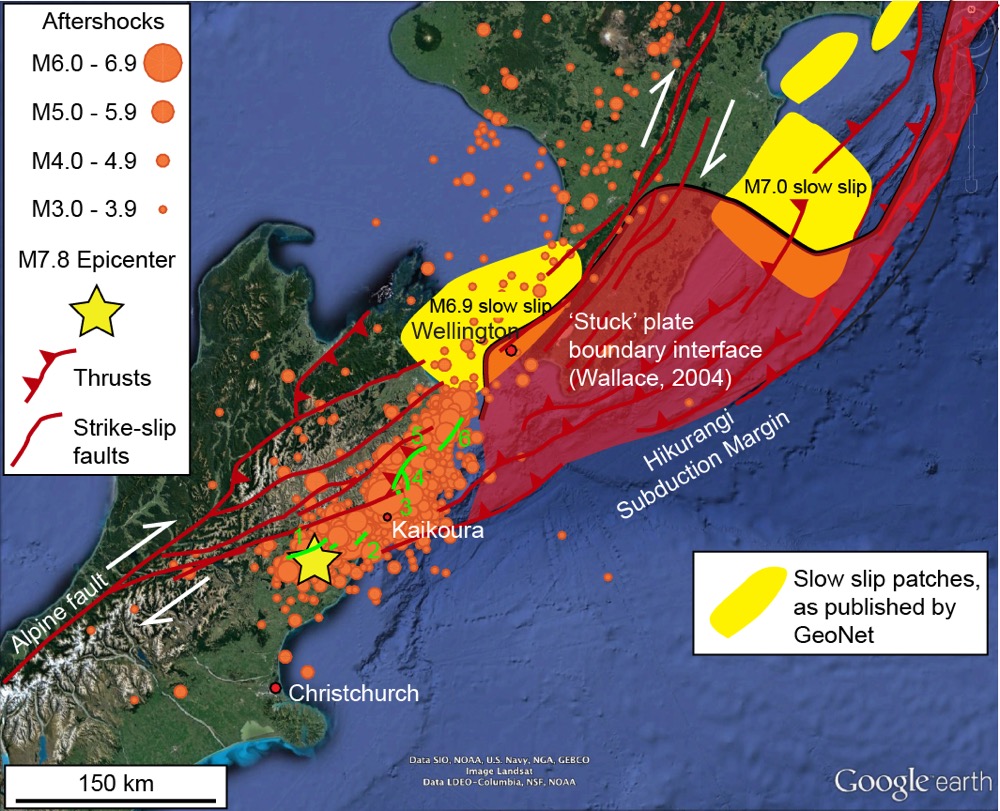
SAN FRANCISCO — The magnitude-7.8 Kaikoura earthquakethat rattled New Zealand last month may have set up the country for another major quake underneath its capital of Wellington.
In the next year, there is a nearly 5 percent chance that a magnitude-7.8 or greater earthquake will strike the southern tip of New Zealand's North Island, Bill Fry, a seismologist and tectonophysicist with GNS Science, a geoscience consultancy service, said Tuesday (Dec. 13) here at the American Geophysical Union's (AGU) annual meeting.
That risk comes, in large part, from the wonky way last month's quake ruptured faults in the area: Instead of rapidly releasing the stress on the ruptured faults, the temblor produced a kind of slow-motion, silent earthquake that is known to increase the risk of future seismic events, Fry said. [Image Gallery: This Millennium's Destructive Earthquakes]
Complex cataclysm
New Zealand lies over an incredibly complex fault system. The Alpine Fault runs along 370 miles (600 km) of the country's South Island, before splitting into a complicated network of four smaller strike-slip faults (where plates slide past each other), called the Marlborough Fault System, according to GNS Science. Offshore of New Zealand, the
The Nov. 14 earthquake, which struck along the Marlborough Fault System, triggered roughly 100,000 landslides, dammed 150 river valleys, ruptured at least six faultsalong a nearly 100-mile (150 km) stretch and moved whole segments of island several meters. Because the quake happened on the rugged, fairly uninhabited coastline, only two people died; still, thousands reported feeling the shaking on both the North and South islands.
"It was essentially felt in the whole country," Fry said at a news conference at the AGU meeting. "Our country is actually quite large."
Fry and his colleagues used a mathematical process called time reversal to back-calculate how the maximum intensity of the rupture moved over time. They found that the shaking lasted about 120 seconds and that there were gaps of up to 20 seconds in the maximum energy intensity when the quake jumped from one fault to the next.
Sign up for the Live Science daily newsletter now
Get the world’s most fascinating discoveries delivered straight to your inbox.
"This is an amalgamation of a few different earthquakes," Fry said.
Future shock
Then, things got weirder.
At almost the same time as the shaking from the Kaikoura earthquake occurred, the team observed instantaneous deformation offshore on the massive fault where the Pacific Plate dives beneath the Australian Plate — a process called subduction. Essentially, the earthquake jumped across several of the strike-slip faults in the Marlborough Fault System and transferred the stress to the subduction zone. [Photos: The World's Weirdest Geological Formations]

But unlike in a normal earthquake, which typically ruptures at meters per second, the subduction fault was experiencing an unusual phenomenon called slow-slip motion, with the two plates slipping past each other much more slowly — at a rate of just centimeters per day that does not emit any detectable seismic waves, Fry said. Such slow-motion earthquakes, called slow slip patches, typically increase the risk of future seismic action in the region, Fry added.
"This made us think, 'Wow, what are you going to have happen next?'" Fry said.
The team eventually ran some computer simulations and concluded that the entire region beneath the southern tip of the North Island faces an even higher risk of a large quake than previously estimated. That's because a large portion of the area beneath the subduction zone is locked, while the regions around it are slipping.
"That plate is stuck, probably storing up for a big earthquake," said Ake Fagereng, a geologist at Cardiff University in the United Kingdom. "The material around it is sliding rather slowly."
Interesting general applications
The investigation of the Kaikoura earthquake is also answering more fundamental questions about how the Earth behaves during these cataclysms, Fagereng said.
For instance, it wasn't clear before this quake whether earthquakes"knew their size" before they ruptured. In other words: Does the location and orientation of the first rupture predict how big an earthquake will be?
However, this earthquake started with small amounts of slip, and then propagated to form much larger ruptures. For instance, motion at the epicenter caused slippage of just 3.3 feet (1 m), whereas some areas 60 miles (100 km) from the epicenter saw displacements of 33 feet (10 m). This essentially means that a quake can start out small and amplify, and that its magnitude can't be completely predicted based on the initial state of the fault. That, in turn, can make early-warning systems difficult, Fagereng told Live Science.
The quake also showed that slow-motion earthquakes can occur both offshore and onshore, as the current quake ruptured underneath the land, Fagereng said.
Finally, the findings revealed that smaller faults can produce larger-magnitude quakes than scientists previously thought.
"Multiple smaller faults can rupture together and make a larger earthquake than previously suggested; that is likely applicable elsewhere in the sense that some hazard models may not account for multiple faults rupturing together," Fagereng said.
ginal article on Live Science.

Tia is the managing editor and was previously a senior writer for Live Science. Her work has appeared in Scientific American, Wired.com and other outlets. She holds a master's degree in bioengineering from the University of Washington, a graduate certificate in science writing from UC Santa Cruz and a bachelor's degree in mechanical engineering from the University of Texas at Austin. Tia was part of a team at the Milwaukee Journal Sentinel that published the Empty Cradles series on preterm births, which won multiple awards, including the 2012 Casey Medal for Meritorious Journalism.









